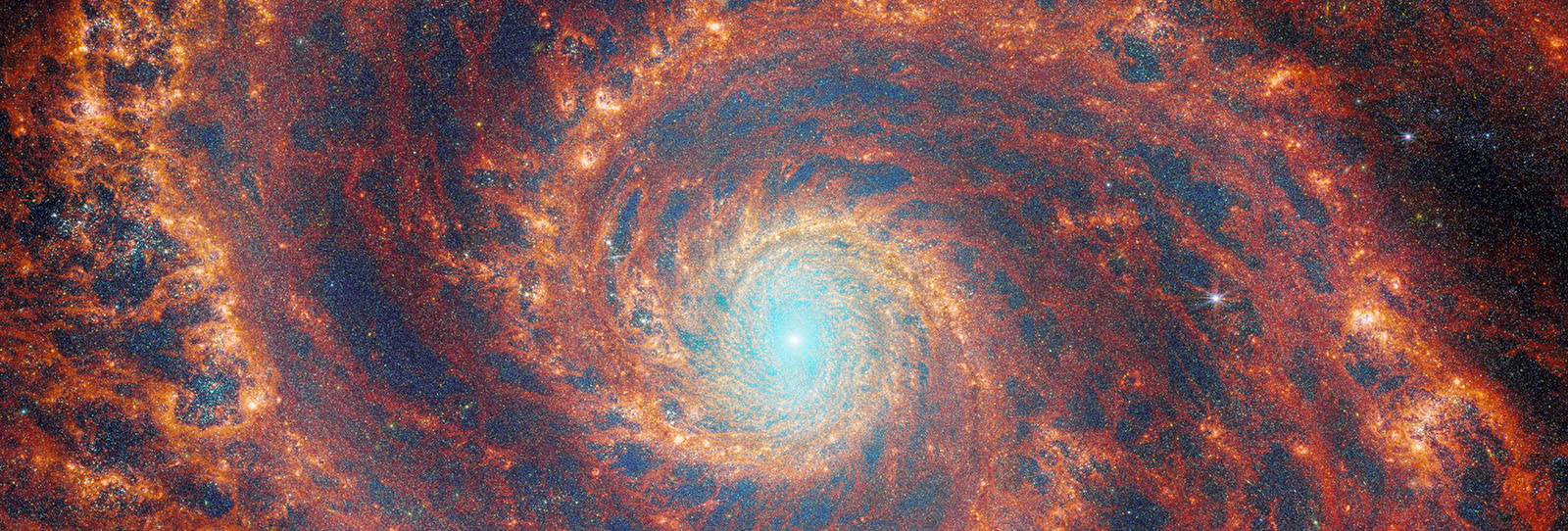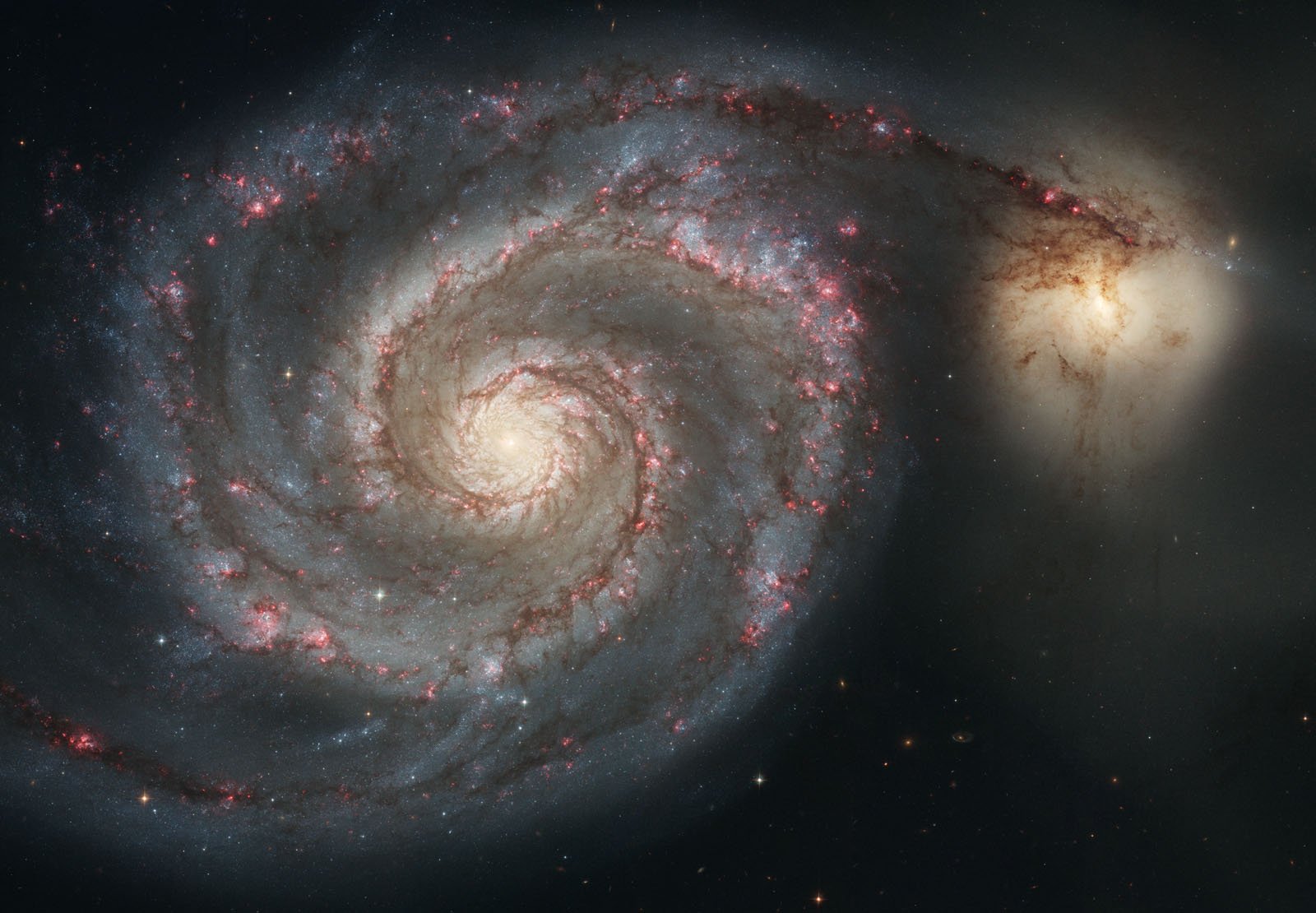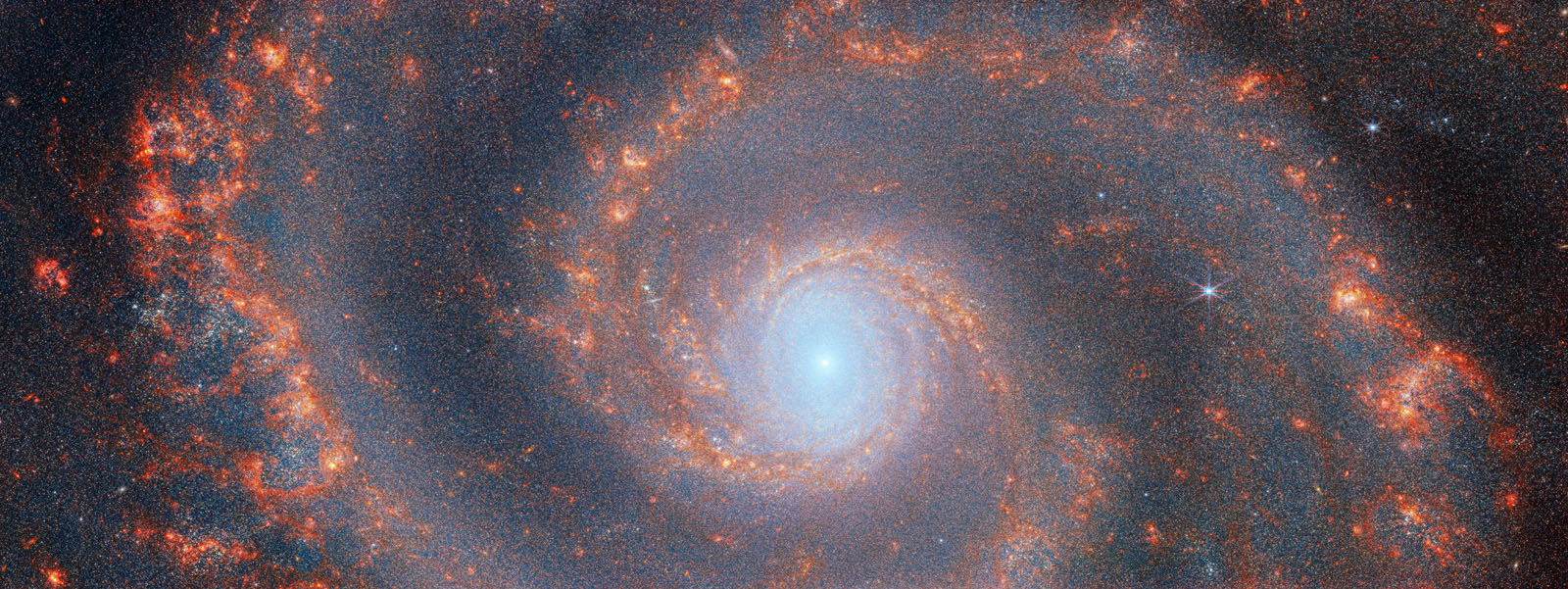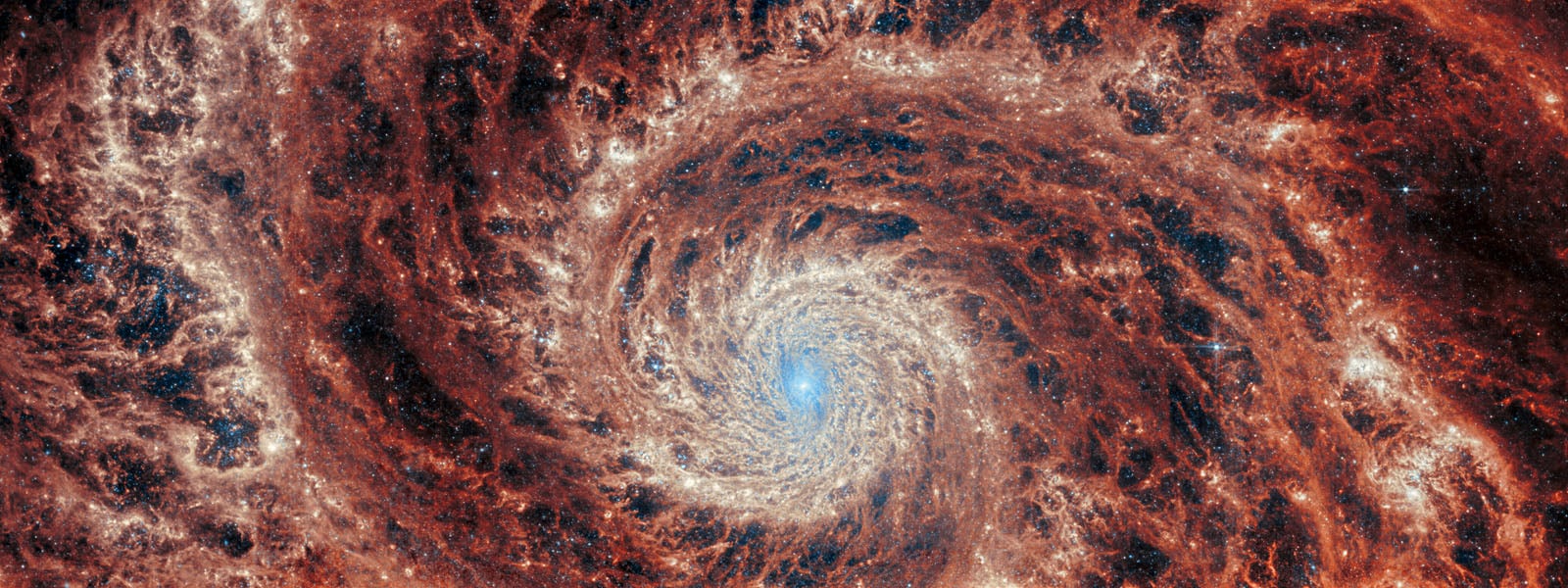Photo of a Cosmic Whirlpool Offers New Details on Star Formation

The James Webb Space Telescope’s Mid-InfraRed Instrument (MIRI) and Near-InfraRed Camera (NIRCam) have captured the graceful, well-defined bending arms of the grand-design spiral galaxy M51, also known as NGC 5194.
About 27 million light-years from Earth in the constellation Canes Venatici, M51 is locked in a tense relationship with its nearby neighbor, the dwarf galaxy NGC 5195. The interaction between these two galaxies has been extensively studied. One of Hubble’s most famous images shows the squabbling galaxies.

“The Whirlpool is one of astronomy’s galactic darlings. Located approximately 25 million light-years away in the constellation Canes Venatici (the Hunting Dogs), the Whirlpool’s beautiful face-on view and closeness to Earth allow astronomers to study a classic spiral galaxy’s structure and star-forming processes,” the Hubble team said of M51 in 2005.
Webb’s observation of M51 is part of a series of observations called Feedback in Emerging extrAgalactic Star clusTers, or FEAST. The FEAST observations “were designed to shed light on the interplay between stellar feedback and star formation in environments outside of our own galaxy, the Milky Way,” explains the European Space Agency (ESA).

“Stellar feedback” is the “outpouring of energy from stars into the environments which form them.” Scientists must form an accurate understanding of stellar feedback to build accurate models of star formation at the universal scale.
Through FEAST’s observations of stellar nurseries outside the Milky Way, Webb provides novel views and understanding of the early stages of star formation and celestial light. Webb can also reveal critical details about the energy reprocessing of gas and dust in stellar nurseries.
Thanks to Webb’s unprecedented resolution, scientists are “seeing star clusters emerging from their natal cloud in galaxies beyond our local group for the first time.”

FEAST observations also hope to help scientists accurately measure the time it takes for stars to “pollute with newly formed metals and to clean out the gas.” These timeframes differ across galaxies.
“By studying these processes, we will better understand how the star formation cycle and metal enrichment are regulated within galaxies as well as what are the time scales for planets and brown dwarfs to form. Once dust and gas is removed from the newly formed stars, there is no material left to form planets,” explains ESA.
Image credits: ESA/Webb, NASA & CSA, A. Adamo (Stockholm University) and the FEAST JWST team